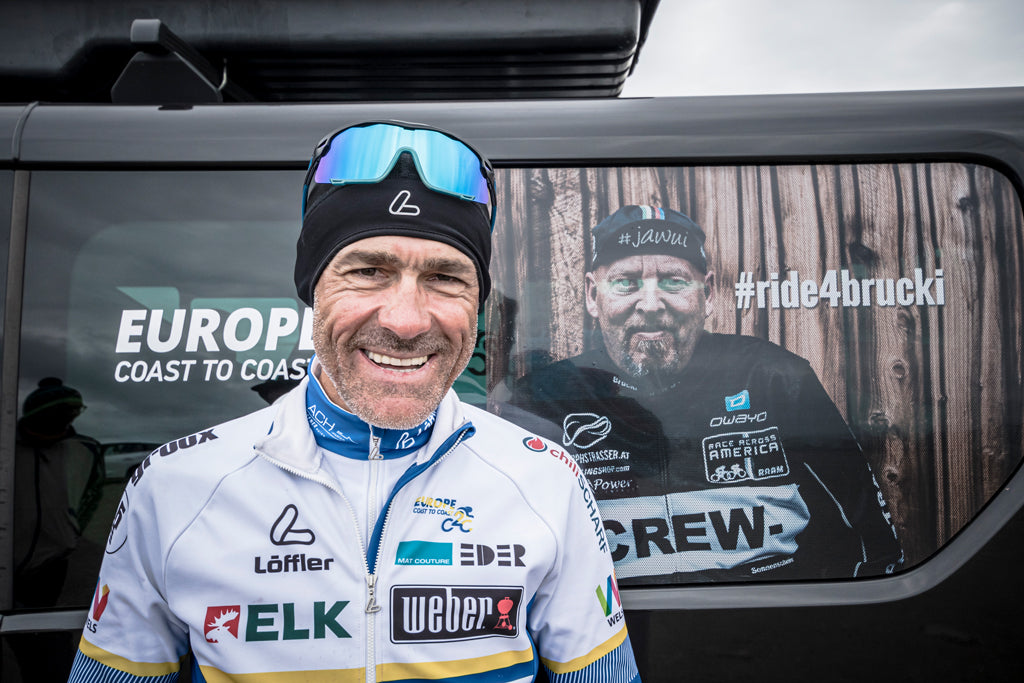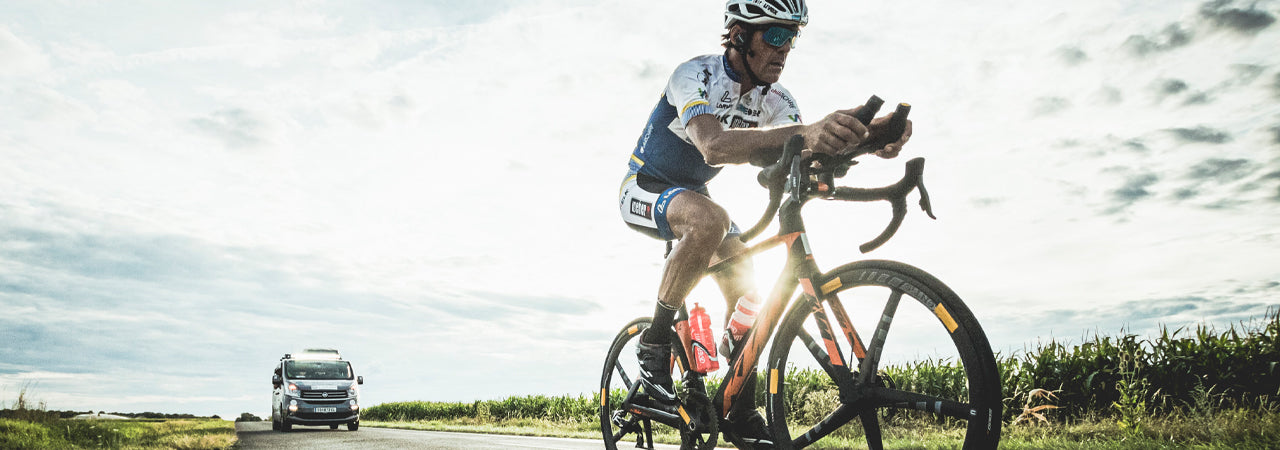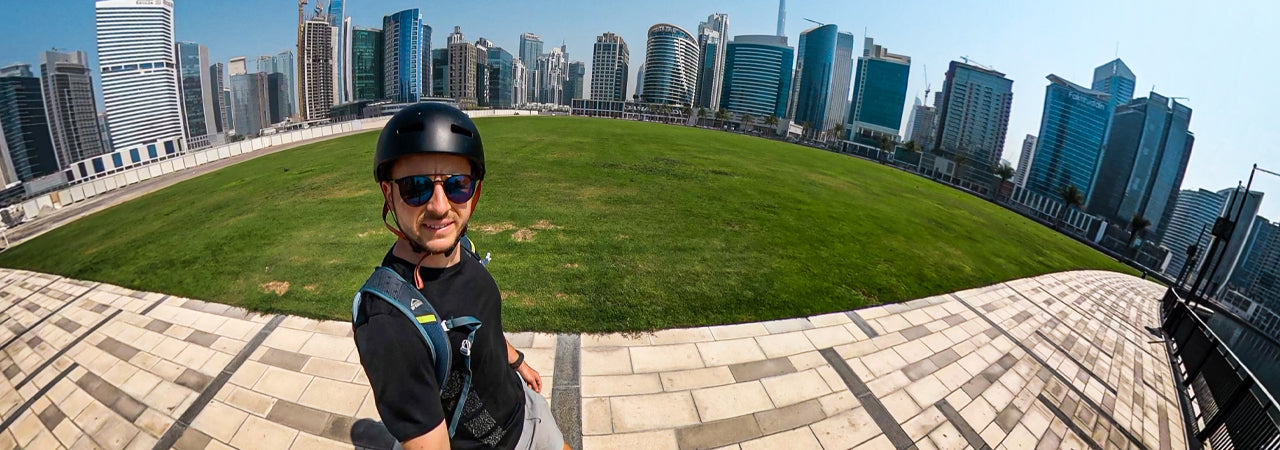Cycling should be fun! J-Athlete & Extreme athlete Wolfgang Fasching is back. After his first blog on the subject of equipment, he reveals the best practice tips for more enjoyment while cycling in his new blog. Whether beginners or amateur athletes, there is something here for everyone!
What should you watch out for before cycling?
Cycling is a sport for everyone. Few sports can be dosed so well and adapted to current performance levels. However, there are a few things to consider.
Know your bike
The equipment does not play an insignificant role when cycling. I'm not saying that you have to spend thousands of euros to be able to cycle properly, but you can't go for the cheapest products if you don't want the fun to be over again. However, I am on the subject of equipment in my last blog already in detail. Just take a look ..
Before every ride you should always carry out a short visual inspection of your bike. Make sure everything is fine. Don't forget to check the air pressure of the tires and the brakes. Because the most important thing is that you are safe on the road.
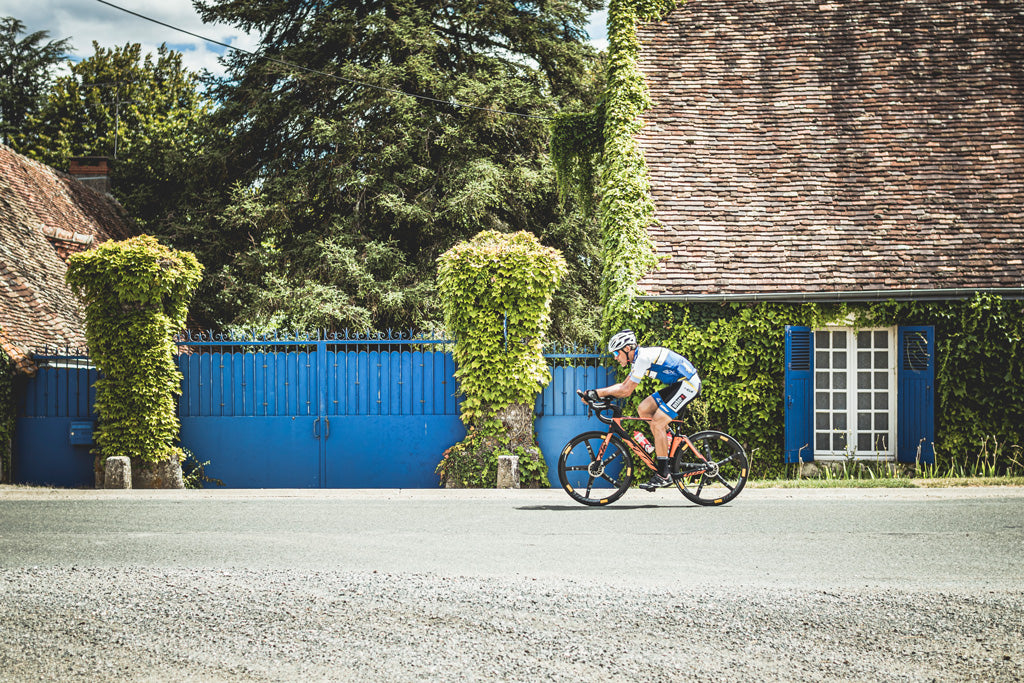
Plan your workouts
Make a plan for when you would like to go cycling and stick to it. The routine helps you stick with it. It is better to drive a shorter route 2-3 times a week than a long route once every few months. You can compare this to reading a book. If you read one or two pages a day, you will notice more than if you read a chapter every six months. So don't just go cycling once a year, but try to do it regularly, this is the best way to improve.
Know your route and the conditions
Before you go cycling, you should always have a rough plan in mind. The most important points are the time, the environment or the route profile and the weather conditions.

If your route includes road sections, I do not recommend driving at 7-8am or 4-5pm, as these are the usual rush hours in road traffic. Also note the altitude and the distance you want to cover in order to have any additional clothing, sufficient fluids, etc. with you. Of course, you should also check the weather report before leaving, so that you are prepared for everything here.
What should you watch out for while cycling?
Basically nothing speaks against getting on the bike and driving off. It is important to start with a rather low frequency and little resistance until you are warmed up and only then increase the intensity. For example, if you want to go on a tour with a few inclines, you should warm up sufficiently on the level beforehand.
Especially beginners I recommend to take the time to be patient and to start in a controlled manner. You get a little fitter with every ride and can slowly dumbbell forward.
While driving, you should choose a pace at which you can drive between 60 - 70% of your ability. Then you are in the optimal training range, the so-called basic endurance. In order to find this area, a sports medical performance test is highly recommended. With the sports medicine test you know how far you can go and when your performance limits have been reached.
"Challenge yourself, but don't constantly overwhelm yourself!"
A high cadence with an easy gear is more recommended when driving than a lower frequency with a hard gear. Between 60 and 90 rotations per minute is a good guideline. There are both bike computers and heart rate monitors that enable this measurement using additional sensors. This allows you to observe and adjust the frequency. Also make sure you have a round step!
"Enjoy the environment instead of U2!"
Last but not least, I am a clear opponent of cycling with headphones on. It can be very dangerous if you isolate yourself from your surroundings and no longer hear anything. Enjoy nature instead of distracting yourself with songs from your favorite band.
Eating and drinking
Drinking is more important than eating! Basically, you should always have enough to drink with you when cycling. Calculate about half a liter per hour of driving! It makes no sense to consume pure water.
"If you open the bottle while driving, you have the drink on your face, but not in your throat, where it belongs."
Choose an electrolyte drink, a carbohydrate drink or a squirted apple juice, but not carbonated! Because carbon dioxide is neither good for the body nor for the bottle. Carbonated drinks bubble up when heated by the sun. If you open the bottle while driving, you will have the drink on your face, but not in your throat, where it belongs.
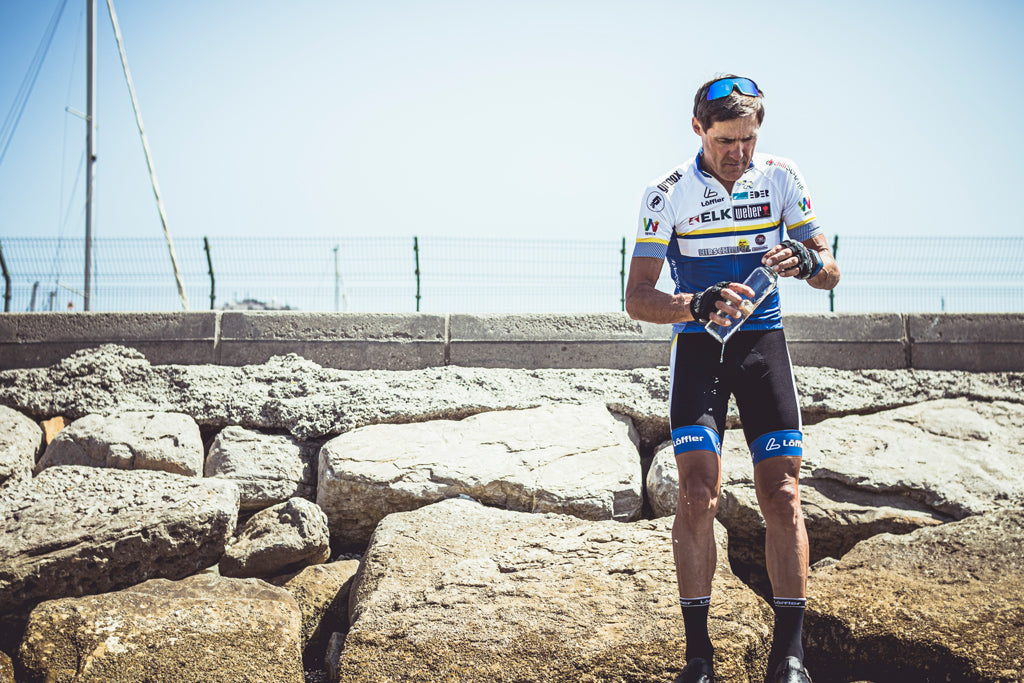
I also recommend two bottle baskets so that you always have an iron reserve with you. You should not start drinking when you are thirsty, but take 1 to 2 sips regularly. Drinking while driving must also be learned. That sounds banal, but taking out the bottle, opening it, drinking it and putting it back in the basket should be practiced.
What you drink and eat before and after cycling is your decision. Pay attention to your feelings here and listen to your body. In most cases, it is advisable to have a bite to eat and drink small amounts before and after the journey. In addition, you should always take an energy bar or a banana with you as a reserve.
What should I watch out for after cycling?
After the ride is before the next ride. In this respect, I also recommend checking the bike here. Check the bicycle tube regularly and replace it about once a year as a preventative measure. The tire casing is also heavily used, depending on the frequency of your trips. Again, I recommend regular checks.
Of course, your body also needs a little attention after cycling. I advise doing some light stretching to loosen up the muscles after the exercise. Relaxation exercises for the back are also important, as this is very stressful due to the curved sitting position on the bike.
How can I get fit for cycling?
Cycling trains a lot of parts of the body, so no additional training is absolutely necessary, especially for hobby riders. Of course, there are still a lot of different types of strength training that you can really benefit from when cycling. However, I am of the opinion that proper stabilization training is completely sufficient. Stabilization training strengthens your body tension by strengthening the postural muscles. Stronger core and back muscles save you from a lot of pain. Most of the time I do isometric exercises, i.e. holding exercises without movement, such as the plank. You can find a lot of exercise instructions on the Internet and there is also a lot of literature on them.
But enough of the theory. Get on your bike and have fun ...
